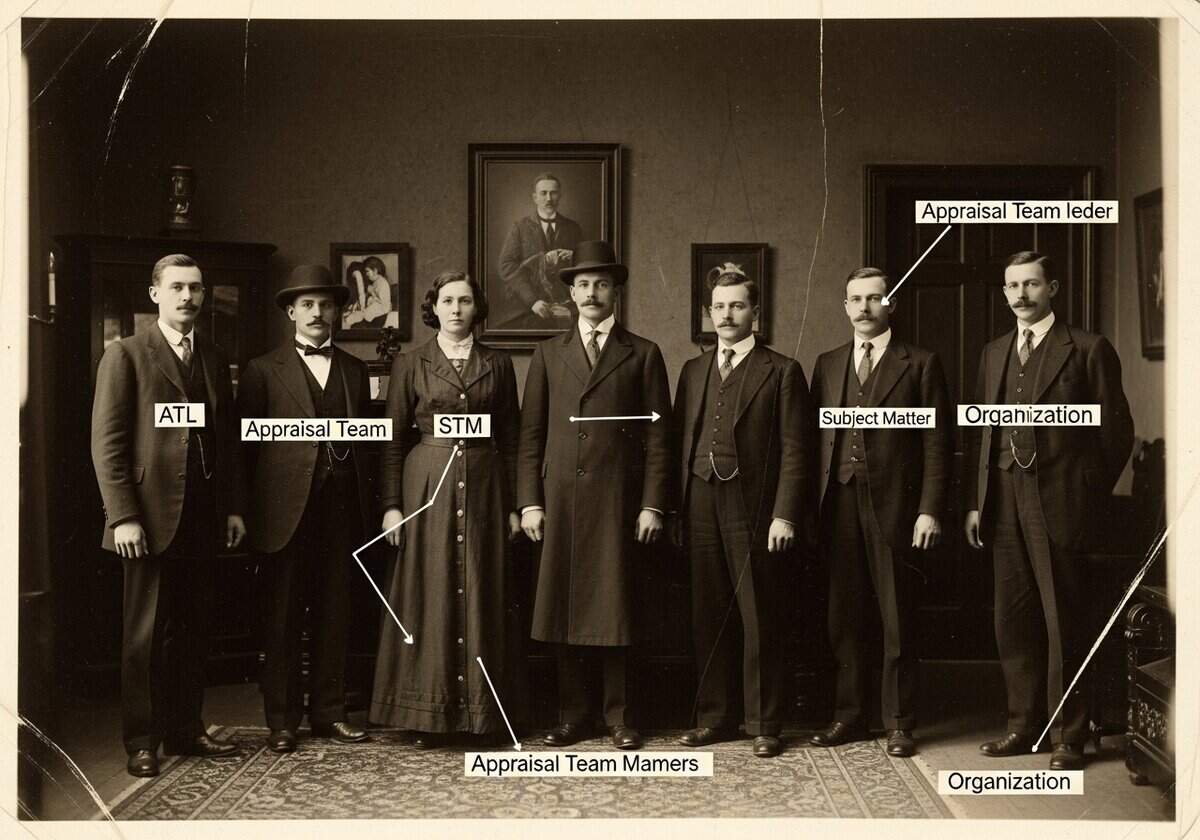The SCAMPI methodology, or Standard CMMI Appraisal Method for Process Improvement, is the method in enhancing organizational capabilities through rigorous evaluation and continuous improvement. According to the Carnegie Mellon Software Engineering Institute, organizations that implement CMMI frameworks experience a 35% improvement in process performance over time, demonstrating the tangible benefits of structured appraisal processes. This article thoroughly explores the SCAMPI framework, detailing its objectives, classification of appraisal types (Classes A, B, and C), the key phases involved in the SCAMPI appraisal process, and the essential roles required for effective evaluations.
النقاط الرئيسية

- SCAMPI provides a structured approach for process improvement.
- Evaluation identifies strengths and weaknesses of processes.
- Three classes (A, B, C) define assessment rigor.
- Key phases include preparation, execution, and reporting.
- Lead appraisers guide the appraisal teams efficiently.
- Promotes organizational maturity across various sectors.
Definition of SCAMPI and its Framework
SCAMPI, which stands for Standard CMMI Appraisal Method for Process Improvement, is a structured assessment approach designed to evaluate and enhance process capability within organizations. It is rooted in the Capability Maturity Model Integration (CMMI), a proven framework used for process improvement in software engineering and systems engineering.
The SCAMPI methodology facilitates organizations in identifying strengths and areas needing enhancement by conducting thorough evaluations that align with predefined maturity levels, which range from Level 1 (Initial) to Level 5 (Optimizing).
The detailed CMMI Framework can be found here (recommended before this detailed SCAMPI):
The SCAMPI framework comprises various components, including appraisal protocols, guidelines, and a set of objectives that drive the evaluation process. Within this framework, three classes of appraisals are distinctly identified, an organization being able to choose a specific class based on its goals, size, and specific industry requirements:
- Class A provides the most rigorous assessment, involving comprehensive data collection and analysis
- Classes B and C offer varying degrees of depth and focus.
Additionally, the methodology serves as a mechanism for ensuring compliance with industry standards and government regulations. Organizations involved in defense contracting or quality assurance must adhere to strict guidelines, making SCAMPI crucial in demonstrating accountability and reliability. Appraisals can uncover areas needing corrective actions, enabling organizations to maintain compliance while improving their operational readiness.
نصيحة: organizations should integrate SCAMPI objectives into their strategic planning to ensure alignment between resource allocation and process improvement initiatives. This alignment can lead to optimized investments in training and technology, further amplifying the impact of the SCAMPI methodology in details across all levels of the organization.
SCAMPI Classes and Their Specific Applications
SCAMPI (Standard CMMI Appraisal Method for Process Improvement) exists in three distinct classes, each designed to serve different appraisal needs and contexts.
- Class A appraisals: are the most comprehensive, requiring a full evaluation of an organization’s processes against the CMMI model. This class is utilized to assess an organization’s capability for achieving maturity levels and is critical for large-scale projects where compliance and risk management are paramount. For instance, a defense contractor may undergo a Class A appraisal to ensure that their processes meet strict DOD standards for program management, leading to improved project success rates and reduced life-cycle costs. Typical total duration: 6-8 weeks.
- Class B appraisals: offer an intermediate approach, typically conducted with less rigor than Class A. This class is suitable for organizations looking to gain insight into their process strengths and weaknesses without committing to a full assessment. The findings can guide targeted improvements, which can lead to an increase in both efficiency and customer satisfaction. Typical total duration: 4-6 weeks.
- Class C appraisals: are the least formal and are commonly used for internal assessments or benchmarking against industry standards. They help organizations identify process areas needing improvement without the associated costs of higher classes. Frequently, small businesses adopt this class to establish foundational practices that support future growth. A notable benefit is that Class C appraisals can reveal quick wins in process improvement, enabling rapid feedback loops for ongoing enhancement. Typical total duration: 2-4 weeks.
The choice among these classes depends on several factors including organizational goals, current maturity level, and regulatory requirements. Organizations might consider utilizing a Class A for formal recognition by external stakeholders, while opting for Class B or C for internal audits or pilot projects.
The SCAMPI Appraisal Process
Essential Roles in the SCAMPI Evaluation
| The SCAMPI evaluation process relies on various roles that align to ensure an effective appraisal of an organization’s process maturity: |  |
| The Appraisal Team Leader (ATL): directs the overall evaluation, functioning as a mediator between the organization and the SCAMPI team. The ATL must possess extensive experience in appraisal methodologies and should ideally have completed related training. A successful ATL streamlines communication, coordinates schedules, and ensures that all team members possess the necessary skills to perform their roles efficiently. | The Appraisal Team Members (ATMs): who perform several tasks, including data collection, document review, and observation during interviews. ATMs bring subject matter expertise in specific domains, which is crucial for making informed judgments about the organization’s practices. These members are also responsible for verifying that evidence aligns with appraisal criteria laid out in the SCAMPI methodology in details. |
| Subject Matter Experts (SMEs): also play a significant part in the SCAMPI evaluation, providing targeted insights into areas such as technical practices, risk management, and quality assurance. SMEs enhance the appraisal accuracy, ensuring that findings are well-founded. | The Organization representative: this individual assists the appraisal team in understanding the organizational context, policies, and existing practices. He is responsible for facilitating meetings, actively engaging in discussions and offering organizational insights, he bridges the gap between the SCAMPI evaluation team and the internal processes. |
The SCAMPI Steps
The SCAMPI appraisal process consists of distinct phases designed to assess and improve organizational processes systematically:
| SCAMPI Class A Appraisals | SCAMPI Class B Appraisals | SCAMPI Class C Appraisals | |
|---|---|---|---|
| 1. Initiation & Purpose | Specific: sponsor authorizes for official maturity/capability level rating, benchmarking, or supplier qualification. SEI-Authorized Lead Appraiser is mandatory. Objectives and scope are formally defined and documented. | Specific: sponsor defines purpose, typically for internal process improvement, initial gap analysis, risk identification, or progress tracking between Class A appraisals. Lead Appraiser is CMMI knowledgeable but not necessarily SEI-authorized. Objectives and scope are more flexible. | Specific: sponsor defines a very specific, narrow focus (e.g., health check of a single process area, readiness for a minor change, or verifying a specific practice). Often conducted by internal personnel with CMMI knowledge. Emphasis on quick turnaround and targeted insight. |
| 2. Planning... |
لقد قرأت 24% من المقال. الباقي لمجتمعنا هل أنت عضو بالفعل؟ تسجيل الدخول
(وأيضًا لحماية المحتوى الأصلي لدينا من روبوتات الكشط)
مجتمع الابتكار العالمي
تسجيل الدخول أو التسجيل (100% مجاناً)
اطلع على بقية هذه المقالة وجميع المحتويات والأدوات الخاصة بالأعضاء فقط.
فقط المهندسون والمصنعون والمصممون والمسوقون الحقيقيون المحترفون.
لا روبوت، ولا كاره، ولا مرسل رسائل غير مرغوب فيها.
الأسئلة الشائعة
What is the SCAMPI methodology?
What are the different classes of SCAMPI and their specific applications?
How does SCAMPI impact organizational process maturity?
How does SCAMPI relate to CMMI models?
مواضيع ذات صلة
- Benchmarking practices: a method for comparing organization’s processes with those of industry leaders to identify gaps.
- تحليل السبب الجذري (RCA): a technique for finding the underlying reasons for process deficiencies or failures.
- تخطيط العمليات: visual representation of workflows to analyze and improve organizational processes.
- Continuous improvement models: frameworks like PDCA or Six Sigma that facilitate ongoing enhancements in processes.
- Capability Maturity Model Integration (CMMI) Frameworks: detailed guides designed to improve process efficiencies across organizations.
- Change management strategies: structured approaches to managing change in processes and organizational culture.
- Quality Management Systems (QMS): a set of coordinated activities to direct and control an organization to consistently improve quality.
- Stakeholder engagement techniques: strategies for involving all relevant parties in the improvement process to ensure success.
- Risk management frameworks: structured methodologies for identifying and managing potential risks in projects and processes.
- Performance measurement systems: frameworks for assessing the efficiency and effectiveness of processes and practices.
مسرد المصطلحات المستخدمة
Asynchronous Transfer Mode (ATM): تقنية شبكات عالية السرعة تستخدم خلايا ثابتة الحجم لنقل البيانات، مما يتيح اتصالات فعّالة ومرنة عبر مختلف أنواع الوسائط. تدعم هذه التقنية أنواعًا متعددة من الخدمات، بما في ذلك الصوت والفيديو والبيانات، مما يُسهّل إدارة جودة الخدمة (QoS).
Capability Maturity Model Integration (CMMI): إطار عمل لتحسين العمليات يُزوّد المؤسسات بالعناصر الأساسية لتحسين فعال للعمليات، مع التركيز على الأداء والجودة والكفاءة في مختلف المجالات، بما في ذلك تطوير البرمجيات وتقديم الخدمات. ويتألف من خمسة مستويات نضج لتوجيه نمو المؤسسة.
Computer Aided Manufacturing (CAM): تكنولوجيا تستخدم البرمجيات والآلات التي يتم التحكم فيها بواسطة الكمبيوتر لأتمتة عمليات التصنيع، مما يتيح الإنتاج الدقيق وتعديلات التصميم وإدارة الموارد بكفاءة في مختلف الصناعات.
Contract Manufacturer (CM): شركة تُنتج سلعًا نيابةً عن شركة أخرى، وعادةً ما تتبع مواصفات تصميم وجودة محددة. يتيح هذا الترتيب للشركة المُوظِّفة التركيز على كفاءاتها الأساسية، كالتسويق وتطوير المنتجات، مع الاستعانة بمصادر خارجية لعمليات التصنيع.
Performance Qualification (PQ): عملية تتحقق من أن النظام أو المعدات تعمل وفقًا لمتطلبات محددة في ظل ظروف العالم الحقيقي، مما يضمن قيامها بوظيفتها المقصودة باستمرار ضمن حدود محددة مسبقًا.
Personnel Airlock (PAL): مدخل مُحكم الإغلاق، مُصمم للسماح للموظفين بالانتقال بين بيئات ضغط مُختلفة مع تقليل التلوث والحفاظ على السلامة، ويُستخدم عادةً في محطات الفضاء والمختبرات والغرف النظيفة. يتميز بأبواب مُتشابكة تمنع الفتح المُتزامن.
Plan Do Check Act (PDCA): نموذج التحسين المستمر يتكون من أربع خطوات تكرارية: التخطيط للهدف، وتنفيذ الخطة، وتقييم النتائج مقابل التوقعات، واتخاذ الإجراءات التصحيحية لتحسين الأداء والعمليات.
Qualified Person (QP): فرد يتمتع بالتعليم والخبرة والسلطة اللازمة للإشراف على الامتثال للمتطلبات التنظيمية وضمانه في إعداد وتقديم الوثائق الفنية، وخاصة في قطاعي التعدين والموارد، كما هو محدد بواسطة معايير الصناعة ذات الصلة.
Quality Management System (QMS): نظام منظم من العمليات والإجراءات والمسؤوليات يهدف إلى ضمان الجودة المتسقة في المنتجات والخدمات، وتسهيل التحسين المستمر، وتلبية متطلبات العملاء والمتطلبات التنظيمية.
Statistical Process Control (SPC): طريقة لمراقبة الجودة تستخدم تقنيات إحصائية لمراقبة عملية ما والتحكم فيها، والتأكد من أنها تعمل بكامل إمكاناتها من خلال تحديد الاختلافات والحفاظ على الناتج المتسق ضمن حدود محددة.
Value Engineering (VE): طريقة منهجية لتحسين قيمة المشروع من خلال تحليل وظائفه، وخفض التكاليف، وتحسين الأداء دون المساس بالجودة أو الموثوقية. تتضمن هذه الطريقة عملاً جماعياً متعدد التخصصات لتحديد وتنفيذ بدائل فعّالة من حيث التكلفة.
Verification and Validation (V&V): عملية لضمان أن النظام يلبي المواصفات ويحقق الغرض المقصود منه، وتتضمن نشاطين متميزين: التحقق يتحقق مما إذا كان المنتج يلبي مواصفات التصميم، بينما يقوم التحقق بتقييم ما إذا كان يلبي احتياجات المستخدم ومتطلباته.











متاح للتحديات الجديدة

مهندس ميكانيكي، مشروع، هندسة العمليات أو مدير البحث والتطوير
متاح لتحدي جديد في غضون مهلة قصيرة.
تواصل معي على LinkedIn
تكامل الإلكترونيات المعدنية والبلاستيكية، التصميم مقابل التكلفة، ممارسات التصنيع الجيدة (GMP)، بيئة العمل، الأجهزة والمواد الاستهلاكية متوسطة إلى عالية الحجم، التصنيع المرن، الصناعات الخاضعة للتنظيم، شهادات CE وFDA، التصميم بمساعدة الحاسوب (CAD)، Solidworks، الحزام الأسود من Lean Sigma، شهادة ISO 13485 الطبية
نحن نبحث عن راعي جديد
هل شركتك أو مؤسستك متخصصة في التقنية أو العلوم أو الأبحاث؟
> أرسل لنا رسالة <
احصل على جميع المقالات الجديدة
مجاني، لا يوجد بريد عشوائي، ولا يتم توزيع البريد الإلكتروني ولا إعادة بيعه
أو يمكنك الحصول على عضويتك الكاملة -مجانًا- للوصول إلى جميع المحتويات المحظورة >هنا<
منشورات ذات صلة
التضليل البيئي: أفضل 15 نصيحة من رجل نبيل للخداع المتقن
كيفية التعامل مع براءة اختراع معلقة بأفضل طريقة
جميع حالات براءات الاختراع: معاهدة التعاون بشأن البراءات مقابل براءة اختراع قيد الانتظار مقابل براءة اختراع منشورة مقابل براءة اختراع ممنوحة
أفضل 10 استراتيجيات وأدوات لإبطال براءات الاختراع
تقييم دورة الحياة (LCA) في تصميم المنتج على وجه التحديد
نظرة عامة على تحليل قيمة المنتج